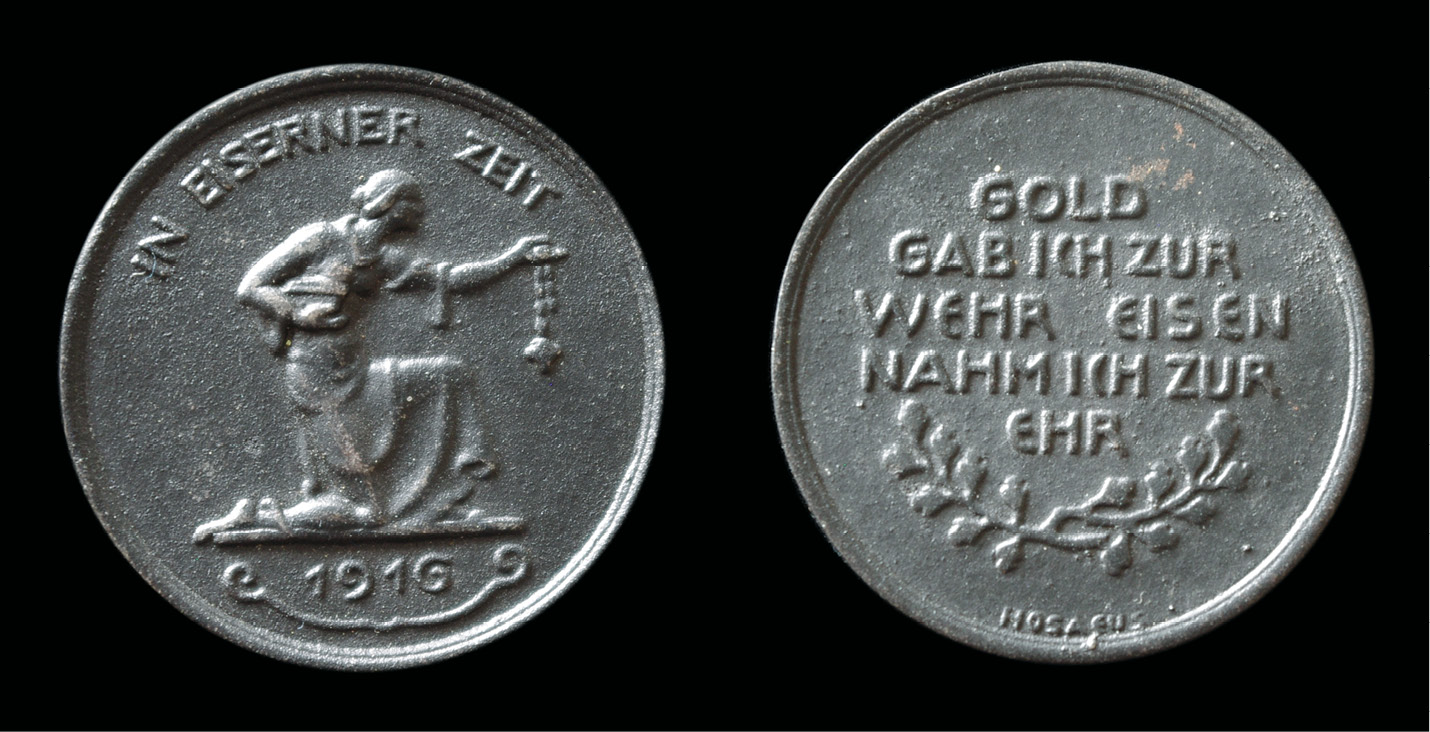91
Iron for gold

THE WAR WAS never going to be a short affair. With rapidly spiraling costs, the burden of paying for it would have to be met by the public. In Britain, for instance, while the cost of the war was estimated at £1 million per day in 1914, by its end, this had increased to around £5.7 million. Taxation could only go so far, so money had to be raised through the issue of War Bonds—Kriegsanleihe in Germany and Austria—which required personal investment in the national scheme, with the promise of rewards later. In most cases, and in all countries, War Bonds were portrayed as part of the patriotic duties of the people. In Germany, a total of nine War Bonds were issued between 1914 and 1918 that earned 98 billion reichsmarks, which covered some 60 percent of the war costs. And, while most belligerent countries depended on similar schemes, there is one that was typical only of Germany: the concept of freely “giving gold for iron.”
There was a precedent. On March 31, 1813, during the Napoleonic wars, Princess Marianne of Prussia personally appealed to all Prussian women to hand in gold jewelry for their country in order to finance the campaigns. In exchange they received simple iron jewelry marked “Gold I gave for iron” or “Gold for defence; iron for honour,” and very quickly the wearing of iron rings, earrings, and bracelets became fashionable. With a world war in progress, the appeal was repeated in 1914, and with similar success. Though voluntary, there was huge social pressure on people to hand in their gold: watch chains, rings, jewelry of all types. The system was simple: if you wore iron jewelry you were a patriot; if you were still wearing gold, you were a traitor.
The medallion illustrated was handed out by the Reichsbank in exchange for not only gold, but also silver and bronze. It depicts a person offering gold In eiserner Zeit (In iron time) and carries the message Gold gab ich zur Wehr Eisen nahm ich zur Ehr (gold I gave to the military I took iron). The medal was designed by the German artist and sculptor Kurt Hermann Hosaeus (1875–1958). Gold was not only given by individuals but also by institutions such as churches and public offices. Appropriately enough for a city associated with steel, in 1917 the Mayor of Magdeburg donated the city’s seventeenth-century golden chain of office in support of the war effort; the iron chain given in exchange is still in the local museum.
For the Germans, iron had a deep meaning, linked directly to Germanic mythology. During the Iron Age the process of melting and forging iron was thought to be a mystical process: few people knew the secrets that made it possible to forge weapons of iron, and with human blood tainted with the smell of iron, so this metal was considered to be the blood—or life force—of the Earth. A popular nationalistic song, Der Gott der Eisen wachsen ließ (The God that made the iron grow), written by Ernst Moritz Arndt in 1812, begins with the words: Der Gott der Eisen wachsen ließ, der wollte keine Knechte. Drum gab er Säbel, Schwert und Spieß dem Mann in seine Rechte (It was the God who let iron grow and wanted no slaves, who therefore armed the Germans with saber, sword, and spear). Giving gold for iron meant much more to the German public than simply funding the war; it meant the direct defense of the fatherland.